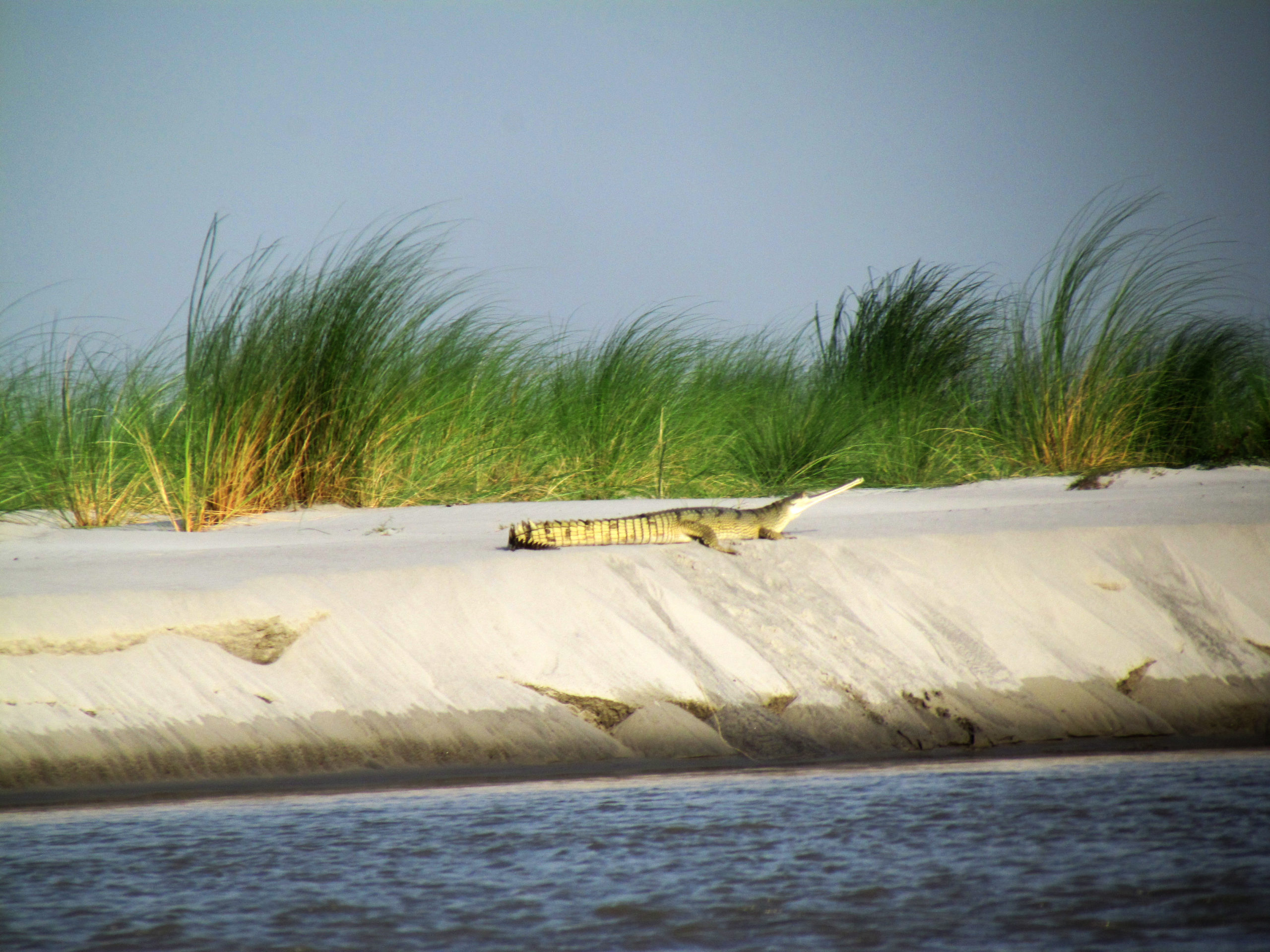
They are the marker of a healthy river system: gharials, a species of crocodile found in South Asia. They have been classified as “critically endangered”.
The Gandak river in Bihar has become the second largest ecosystem for gharial population after Chambal river where the largest numbers of gharial are found. As per a recent survey by Wildlife Trust of India, more than 260 gharials have been sighted there. The current breeding sites are Chambal, Girwa, Ramganga and Gandak rivers.
The picture, however, was not always that good. It was believed that since a barrage on the Gandak was built around 1969, gharials were completely wiped out from that river. But in Nepal (Gandak is known as Narayani in Nepal) — a captive breeding program was going on to protect gharials. Many a time, gharials were sighted by locals on the Indian side too but not taken seriously. Only in 2010 was it found that gharials are thriving in this river after a survey confirmed the existence of around 15 of these creatures.
Bihar forest department and Wildlife Trust of India decided in 2012-13 to start a programme to conserve these fish-eating, long-snouted crocodiles. The project team of WTI was led by Deputy Director Dr Samir Kumar Sinha, including field biologist Subrat Kumar Behera and veteran crocodilian expert Prof. BC Choudhury. They initially released gharials from Patna zoo and also facilitated in-situ breeding.
Gharials are listed in the Convention of Migratory Species (Appendix I) as about 650 individuals are found in the wild in sparse pockets of the subcontinent’s rivers. They were once common in the Indus, Ganga, and Mahanadi river systems; wild gharial populations are found mainly in India and Nepal. In Bangladesh, they are distributed in the Padma river (Ganga) and the Brahmaputra river, plus some of the tributaries and distributaries, but are on the verge of extinction.
“The gharials were always there in this river but never surveyed due to law and order situation in this region, only in 2010 it was confirmed that this river is also a one of those few sites where gharials are found,” explains Samir Kumar Sinha.
Every year, the WTI team surveyed and monitored the gharials. “In 2015 we found that the river also has yearlings, which confirmed that breeding is going on in gharials.”
A report “Aquatic Fauna of the Ganga River — Status and Conservation” released in 2018 by WTI said that priority aquatic animal species were mostly limited to the relatively undisturbed areas — including protected areas. These protected areas form around 15.5% of the total length of Ganga river and priority species cover around 50% of that stretch.
Gharials are a species that only survive in river habitats with deep, clear, fast-flowing waters and steep, sandy banks. Gharials also require sandy banks to bask — the almost 320-25 km long stretch of Gandak river and diverse meandering patterns provide good conditions for them, as most of the area of the river stretch is undisturbed.
Gandak river is the only conservation site of gharials which does not come under protected area, which seems ironic as a conservation project of a critically endangered species is going on — and its habitat is not yet declared a protected area. As per reports, Bihar state government is now planning to notify a 150-km stretch of the Gandak river as a Conservation Reserve, which will provide it some protection.
Talking about the flood-prone nature of Gandak river and survival of gharials in such a river, Sinha says, “Every animal is by nature prepared to survive in its natural habitation. Each female lays 20-95 eggs but most of them don’t survive. This is a natural phenomenon, similarly flood is also a natural phenomenon and gharials are prepared for that. There is sufficient flow of water in the river to assist the gharial downstream during floods”.
Gharials are endemic to South Asia and very important to the river eco- system. Scientists and biologists believe that the population of every wild animal, especially those requiring protection, must be diversified because in a disease outbreak at a particular site, enough population of a species must be present to prevent it going extinct.
“In around 2007-08 a disease outbreak happened in Chambal river. Many gharials died at that time, which prompted IUCN to declare them critically endangered. Much research was done but failed to identify what disease caused such mortality in gharials,” Sinha said.
(Cover: A gharial basking on a high sand bank of the Gandak // Photos:WTI)
Rival leagues trigger players’ suspensions and a legal battle in Indian golf, for now
Former Delhi CM Kejriwal criticises Centre, Delhi govt over worsening air pollution, alleges AQI manipulation
Delhi Police raids Nangloi unit producing fake engine oil, seizes over Rs 1 crore worth…
Mukesh Sharma reimagines digital components as living matter in his solo exhibition ‘Decoding Digital DNA’
Nine accused were arrested in coordinated raids as police uncovered organised networks supplying mule bank…
Nearly 1.57 lakh PUC challans issued in two months as Delhi steps up GRAP enforcement…